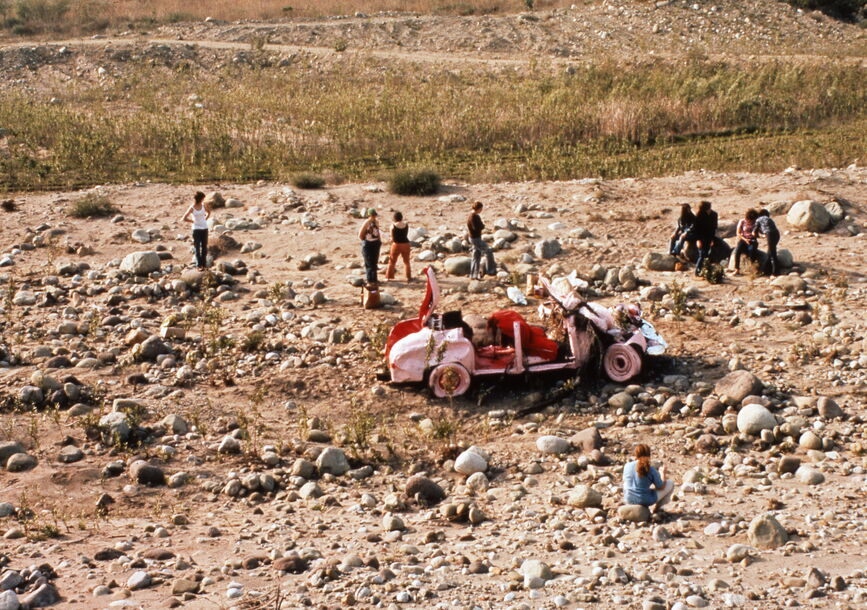Upcoming....
The Feminist Art Program (1970–1975): Cycles of Collectivity
Sept 13, 2023 to Jan 21, 2024
REDCAT Roy and Edna Disney CalArts Theater
Opening reception, September 13 at 7PM
In 1970, artist Judy Chicago pioneered a feminist model for art and education with her students at Fresno State College. Chicago was invited by Miriam Schapiro to collaboratively expand this program at CalArts in 1971, where they would go on to develop radical and now-influential forms of art, pedagogy, and performance. The program began a cycle of collective activity with the contribution of numerous students, faculty, artists, and designers, many of whom are now considered pivotal artists in feminist art history. Chicago and Schapiro, along with their students and guest artists, organized the ground-breaking feminist collective installation, Womanhouse, in 1972, and supported a number of transformative and pivotal performances and publications working with the Women’s Design Program. A complex and fruitful moment at CalArts, these energetic years encouraged new feminist pedagogies to bloom simultaneously inside and outside the Institute. This exhibition acknowledges the many generations of women, trans, queer, and non-binary faculty, students, and artists who have stewarded these histories through teaching, archiving, and experimenting. Engaging with these initial moments, while also drawing connections with subsequent contributions, The Feminist Art Program (1970–1975): Cycles of Collectivity brings together these histories through its diverse feminisms, gender theories, and transfeminismos. The exhibition gathers materials from institutional and personal archives, joining them with new responsive artworks by CalArts alumni AK Jenkins, Andrea Bowers, Gala Porras-Kim, and Suzanne Lacy. The Feminist Art Program (1970–1975): Cycles of Collectivity presents an ever-growing feminist contribution to art and pedagogy with a multiplicity of voices, contexts, and identities, with an intergenerational collective of scholars, artists, activists, and curators contributing to the research, memory, syllabi, and artworks on display.
This exhibition gathers institutional and personal archives. Thank you to Judy Chicago and her Studio, and artists Dori Atlantis, Suzanne Lacy, Karen LeCocq, Mira Schor, Faith Wilding, and Nancy Youdelman. Artist Elana Mann and Audrey Chang’s archives provided meaningful materials for Exquisite Acts and Everyday Rebellions (2007). Thank You to CalArts Library and Special Collections, Penn University, and Eberly Family Special Collections Library, Judy Chicago Archives, Schlesinger Library, Radcliffe Institute, Harvard University Judy Chicago Papers and Rutgers University, Special Collections on Miriam Schapiro archives.
The Feminist Art Program (1970-1975): Cycles of Collectivity is funded in part with generous support from the Elizabeth A. Greenberg Fund
